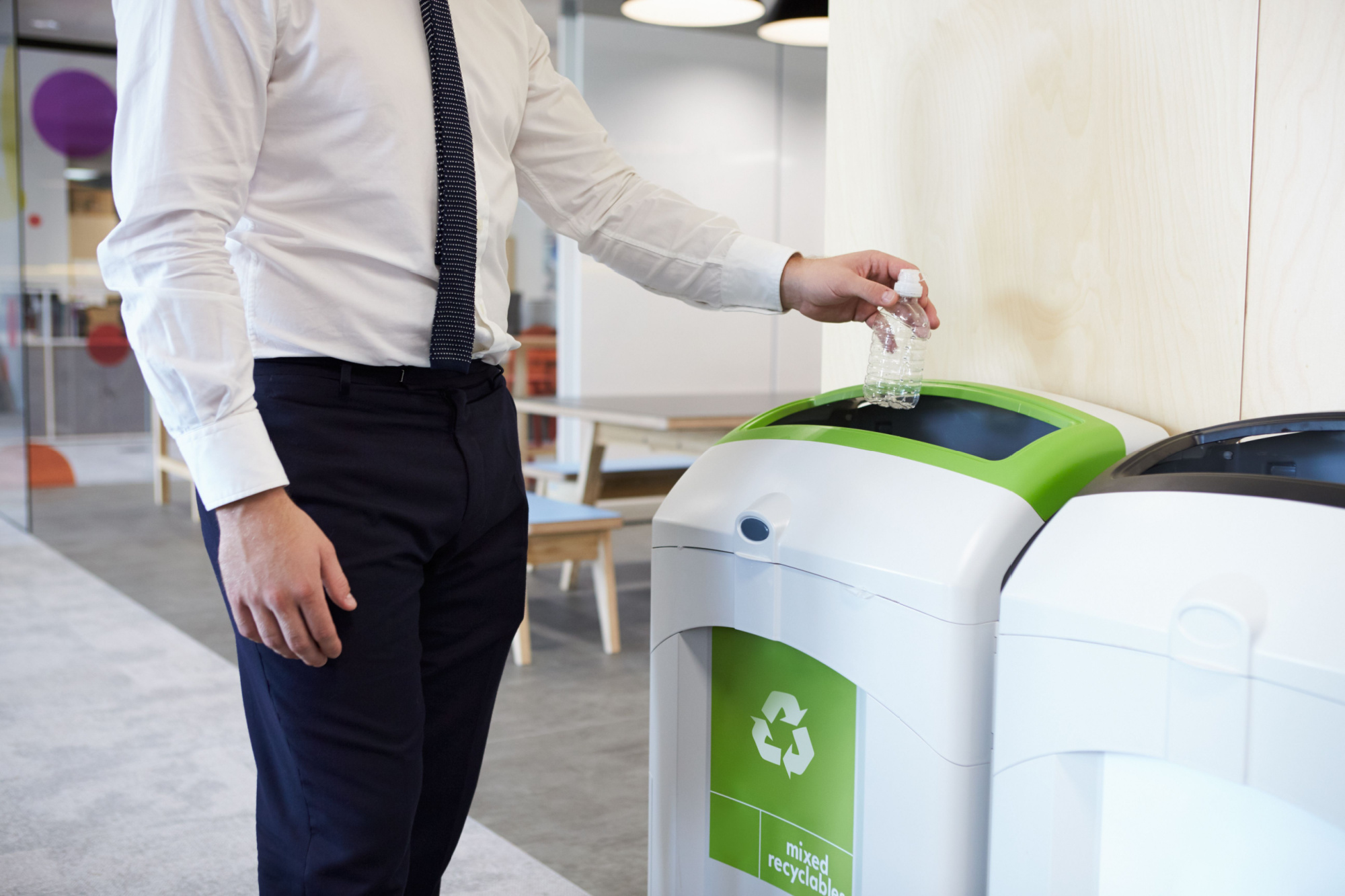
Waste reduction in the office
Tips for a greener office
Even in a digitized world, offices still generate a considerable amount of waste. In fact, the average office worker can use thousands of sheets of copy paper per year and nearly half of the paper printed ends up in the trash by the end of the day. And it’s not just paper that ends up in the trash—the average office worker throws out hundreds of single-use coffee cups each year. Unfortunately, these materials and more, such as food waste, end up in landfills. But there is good news: There are steps you can take as a facility manager to reduce the amount of waste in your office.
Benefits
Waste reduction offers great environmental benefits, including reducing greenhouse gas emissions (GHGs) and conserving natural resources such as trees, metals, and water. Reducing the amount of waste your office produces also directly impacts your organization and improves your bottom line by cutting costs. By using less paper, specifically, the money spent for printer upkeep, ink, toner, postage, and physical storage significantly decreases. Additionally, transitioning your files to an electronic document management system provides quick and easy access to documents, saves time that would be spent filing physical documents, and offers document security.
Waste audit
The first step to reduce waste in the office is to conduct a waste audit. You can hire a service to do the audit or do it yourself by following this checklist:
- Assemble a team to conduct the audit. Aim for at least five people, each from a different department, if possible. Consider making this your ongoing sustainability committee or “green team.”
- Determine your waste categories. Common categories include glass, paper, cardboard, plastic bottles, and food waste.
- Gather your tools. Supplies needed include an open area, a scale, rubber gloves, face masks, clipboards, labeled boxes for waste categories, and trash bags.
- Sort your trash. Label each trash bag with the department it came from. Then weigh all the trash and recycling separately. Wearing gloves, sort all materials into the boxes for their categories. Note any recyclables mixed in with the trash. Once everything has been sorted, weigh each category.
- Analyze your results. Divide the weight of your recyclables by the combined weight of all your waste (trash and recyclables). Multiply the result by 100, which gives you a weekly waste diversion percentage. Then look at the weights you recorded for individual waste categories. Make note of which categories are the highest and if you found recyclables mixed in with the trash.
Action plan
After analyzing the results from the waste audit, work together with the green team and your organization’s upper management to set short- and long-term waste-reduction goals. Use your audit results to brainstorm activities to help achieve your goals. For example, you might find there’s food contamination in your recyclables, indicating the need for improved education about what should go in the recycling bin. When selecting activities, focus first on waste prevention, which will help eliminate waste at the source. Next, assess recycling and composting options to manage waste that can’t be prevented. Finally, implement waste-reduction activities that are best suited for your organization. Make an announcement and host a waste-reduction program kick-off. Use challenges, zero-waste lunches, and recognition to highlight people’s role in helping the organization meet its waste-reduction goals. Established performance indicators can be tracked to monitor program success.
Reduce, reuse, recycle
When creating your waste-reduction program, keep in mind the three Rs: Reduce, reuse, recycle.
Reduce. The most effective way to reduce your organization’s waste is to generate less in the first place. One way to do this is to digitize your files in document management software, which often has advanced security capabilities to protect sensitive files. Another way to reduce paper waste is to develop a printing policy so employees only print what they need and ensure printer settings are defaulted to print double-sided.
Reuse. Reusing products and packaging prolongs the useful life of materials and prevents single-use items from going into the trash. Your organization could offer solutions to decrease food and drink receptacle waste—for example, providing an on-site coffee maker and a drinking water fountain and reusable cups and bottles. You can also provide or encourage employees to bring their lunches in reusable containers.
Recycle. When waste can’t be prevented or reused, recycling is the next-best option. Implement a recycling and composting (for food waste) policy. Ensure clear signage on recycling, composting, and trash bins that includes pictures of what goes in which bin. Keep all bins next to each other for easy access.
Consider conducting an annual review of your waste-reduction program. With the green team and management, evaluate what’s working and what can be improved.



